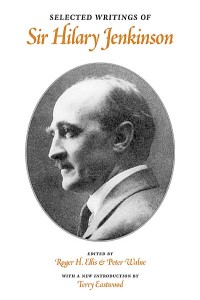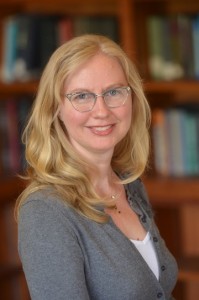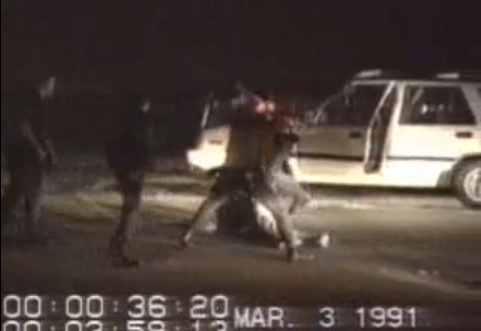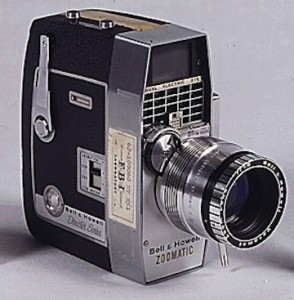UCLA Inaugurates New Education Approach
The University of California at Los Angeles is changing the focus of its master’s-degree education in moving-image archiving, and the move signals evolution in employment opportunities for graduates.
Less film theory, less confusion between cultural-studies and archival-studies components, and more attention to emerging career opportunities, underpins the new formula. And it is now being put to the test with the first cohort of admissions to the newly organized program, who instead of a master’s degree will earn a master’s in library and information science degree with a specialization in moving-image archiving.
n
Last year, UCLA stopped admitting students to its graduate program in moving-image archive studies, which straddled two schools – always a tricky situation in academe. It announced that it would in fact shutter the program at the end of the 2015/2016 academic year.
About 10 students had been accepted into the moving image archive studies program annually, making for a student body of 20, at any time. About 25 students applied each year from 2005 to 2010, then about 40 annually in 2010-11 and 2011-12, but that dropped to 30 in the fall of 2012.
Among reasons for that was increased competition for students. North America has two other similar programs: one at New York University, the other at the University of Rochester, which collaborates with the L. Jeffrey Selznick School of Film Preservation at the George Eastman House International Museum of Photography and Film. Programs also exist in the Netherlands, Britain, France, and Germany.
At UCLA, students have taken core courses in moving-image archive studies, and required courses in information studies and cinema-and-media studies; they have also prepared and presented portfolios of professional and scholarly work, including a journal-quality essay.
By reputation and its own estimation, the UCLA program fared well. A self-assessment in 2012 found that it had become well-regarded and selective, and that its graduates were quickly getting good jobs in moving-image archiving. Its location in Los Angeles helped, as did its links to the UCLA Film & Television Archive, and its ability to place students in internships at varied organizations. Those included studios like 20th Century Fox Home Entertainment, the Jim Henson Company, and Sony Pictures Entertainment; corporate and nonprofit archives such as the Academy of Motion Picture Arts and Sciences (Academy Film Archive), CNN Library, the Library of Congress’s Motion Picture, Broadcasting & Recorded Sound Division, and the Pacific Film Archive; research organizations like Walt Disney Animation Studios’ Animation Research Library and Warner Bros. Corporate Archive; and technical facility like Chace Audio by Deluxe and PRO-TEK Vaults.
But the self-assessment also found that it had become “abundantly clear” that the program was “at a crossroads.” Current and former students, instructors, and UCLA archivists, as well as informed observers, all agreed that it needed to change to remain “viable,” the study concluded.
The problems identified included patchy instruction and advising, outdated and disorganized course work, and over-theorization at the cost of practical training. Most apparent was that many problems stemmed from the program’s unusual and cumbersome status within the academic structure of UCLA.
The self-assessment also found that it had become “abundantly clear” that the program was “at a crossroads.”
A lot.
It all sounded good in theory, says Snowden Becker, the program manager of Moving Image Archive Studies at UCLA. “It combined the best aspects of the library school and information-studies program, and the cinema-and-media-studies program” in the Department of Film, Television, and Digital Media, in the School of Media, Film, and Television. Add to that the presence on campus of the UCLA Film and Television Archives, and it all “seemed exactly what you would do if you wanted people to become moving-image archivists,” Becker says.
But to cover so much ground, the program was created across two schools and straddled two departments – Information Studies (library science) and Film, TV, and Digital Media. That multiplied organizational challenges. “We had two deans, and two bodies of faculty, that came from two very different disciplinary backgrounds,” says Becker. “And the third party in there was the Film and Television Archive, which is not an academic unit.”
How to manage staggering volume is a burning issue in modern scientific experimentation and data collection.
But doing that makes most sense in an information-studies setting — in the library school — rather than struggling to teach it within a media-studies department in the film school, “always an awkward fit,” she says. At meeting after meeting, MIAS faculty and administrators struggled with the issue of “whether the program was an archival-studies program that looked at audiovisual materials as a unique form of information and record keeping with unique needs of management, care, access, and description”; or, “was it a media-studies program that partook of the archival turn in media studies, the tendency to look at media and understand it from more technologically and historically informed positions?”
The solution she and her colleagues are now attempting is to establish a media archival studies program squarely within the library school – to offer a master’s degrees in library and information studies with a media-archives focus. She says: “That lets us untether from the feature-cinema-centrism that has been part of the baggage of being associated with a very highly reputed film-studies department and a film-and-tv archive whose major strengths are in classical Hollywood cinema, and to a lesser extent, television.”
In moving-image archiving, times are changing. And here is where the change at UCLA signals a fascinating turn in moving-image archiving as a field of study and a profession.
Take the phenomenon of amateur filming of police behavior. News events of the past few years make apparent just how much of a role amateur mobile-phone footage is playing in pressing for appropriate policing, just as well police video-surveillance tape is forging change in law-enforcement practices. As those stand off against efforts to secure and maintain citizens’ rights and the rule of law, the stakes could hardly be higher, not more due.
That kind of moving-image retention and assurance of access is an area that students enrolling in UCLA’s new MLIS specialization track will increasingly learn about, says Becker. She and her colleagues want to make the training “applicable to newer forms of record keeping, of things like surveillance, or body-cams that are being implemented by police forces, or medical imaging, or scientific-data collection” — how to manage its staggering volume is one of the most burning issues in modern scientific experimentation and data collection. “All of those increasingly incorporate video and audio elements,” she says. Providing instruction in how to handle it “is really going to serve our students well,” she believes.
One reflection of that, she adds, is that the masters degree in library and information science – the MLIS – is being demanded by “a great many contemporary job postings” in moving-image archiving, and increasingly so. “When those specify a credential, particularly for positions like digital-asset manager or metadata specialist, they really do want to see an MLIS.” In keeping with that, UCLA is seeking, with its program change, to “play to one of its strengths”: an “I-school” with a social-justice approach to record keeping, and “a strong community-based approach. Something we really teach at UCLA,” she says, “is that preserving records is not just something archivists do for governments or elite cultural institutions.”
As preparations were under way for the change, she and her colleagues consciously encouraged a shift in their applicant pool. “We get fewer and fewer applications now where the essays say things like, ‘I’ve always loved movies so much; my goal is to preserve these celluloid treasures for future generations to enjoy’,” she says. “Now the applications tend to talk more about things like equity of access and the real challenges of providing accurate, consistent, detailed, and effective descriptions of moving-image records.”
Students will still need to learn the same basics of film preservation and restoration as in the past, but they are arriving with a knowledge base far different from those of a decade ago. Now, for example, few students come to even a program like UCLA’s with any familiarity with 35mm still or moving-image cameras. They say, Becker reports, that “’I didn’t realize that there were negatives.’” That amounts to a generational shift in how students and younger people see the moving image, “and we’re trying to respond to that.”
But Becker addes: “What we are still trying to figure out, and what we would like to get out in front of, is the other stuff that we know we haven’t done as well with, and that includes 20th-century archive collections that include audiovisual media that isn’t cinema — things like industrial films, sponsored film, and home movies.”
Home movies are a particular interest of Becker’s – especially as they relate to policing. “The most famous home movies,” she notes, “are evidence of crimes in progress.” That is clear from, say, Abraham Zapruder’s film of the 1963 assassination of President John F. Kennedy, taken with an 8mm Bell & Howell Zoomatic Director Series Model 414 PD, of from George Holliday’s videotaped images of the beating of Rodney King in Los Angeles in 1992. “There are areas of intersection with historical film and historical recording and other systems of record keeping and heritage that are important for us to turn our attention to, now,” says Snowden Becker.
Watching late-night cable-tv police-reality shows from about the mid-1980s, one might have thought that every patrol car in America had a camera crew in it. Such was the public interest in riding along and seeing officers deal with possible perpetrators. But the volume of the footage from those shows will soon be dwarfed by, for example, every police department’s footage from the body cam on every one of its patrol officers. Becker and a colleague who specializes in information security and data-encryption practices are seeking grant funding to convene a conference so archivists and law-enforcement officials can consider the data-management needs that body cams and the like will create, and the lessons each profession can learn from the other.
Public interest in surveillance will certainly grow, fueled by fear of its reach and by evidence of how powerful bystander video can be as a check on indulgences of authority. In surveillance studies, the concept has arisen over the past 15 years of sousveillance – surveillance of the surveillers as an assertion of civil liberties and human rights: the monitoring from below of the activities of panoptic Big Brother.
Those are among the tasks and challenges that today’s moving-image archiving students will face, tomorrow, says Becker: “Those pages of history are being written as we speak.” And they present both challenges and opportunities, she believes.
![]() “Law-enforcement agencies around the country are going to be generating vast amounts of video,” says Becker. “Those same law-enforcement agencies have collections of material evidence that very much function as trauma archives for a community and have preservation, integrity, access, authenticity, and reliability considerations like any other type of archive.”
“Law-enforcement agencies around the country are going to be generating vast amounts of video,” says Becker. “Those same law-enforcement agencies have collections of material evidence that very much function as trauma archives for a community and have preservation, integrity, access, authenticity, and reliability considerations like any other type of archive.”
And, she adds, “they have record-keeping requirements with a very long time frame, so people who are managing audiovisual evidence in that context might also be applying their preservation skills to give a law-enforcement agency a sense of their place in history, the sense that they are part of a community-based archiving practice.”
The continuity of surveillance, sousveillance, and other emerging moving-image phenomena with the past is self-evident, and of course the older formats will keep needing upkeep and improved access tools. That includes UCLA’s Film and Television Archive, and the Academy Film Archive, a collection that takes in silent, nitrate-based film, kinescope, 16mm and 35mm film, television formats, and much else. “We’re looking at how to make sure that records from 100 years ago and 100 years from today get preserved for the future, for another 100 years,” Becker says.
Graduates will likely face an increasing pace of technological change, “so we have a much shorter time frame to approach, analyze, and solve those issues that we ever used to,” Becker says.
Fortunately, even in the purported age of instant, online, on-screen gratification, the supply is still there of young people interested in the painstaking, generally unglamorous work of securing records and optimizing access to them. “A major tenet of appraisal theory,” Becker explains, “is that you are not necessarily charged with judging with what is of value, now. Some archivists are, but not always. Some of the charge is just to accept that you are a keeper.
“Theodore Schellenberg said that we appraise for evidentiary and intrinsic value [of what archivists collect], but Hilary Jenkinson said, we merely exist downstream from the record creator; we don’t get to dictate form or content; what we do is keep.”
The value of, say, cataloging as “incredibly meticulous, painstaking work that has tremendous power and value, and that makes other kinds of work possible” is better taught from a library-school base than from a film-school one, she says. “It’s boring labor; it’s not necessarily glamorous, but it’s one thing that people with MLIS degrees can do that a media-studies master’s degree doesn’t necessarily equip you to do.”
 She cites the work of UCLA’s Jonathan Furner, the chair of the Dewey Decimal Classification Editorial Policy Committee, a 10-member international board that advises librarians and associated workers around the world. “He’s somebody who understands just how much power and meaning can be conveyed in a classification scheme,” she says. “For example, when you stop referring to transgender people in your classification scheme as sexual deviants, and you start referring to them as transgender people, that has a tremendous reflective impact but it also has a tremendous outward impact on society, on the people who use that system. Those systems all too often go unexamined or they are treated as invisible. So looking at them and thinking about how and when and under what circumstances we describe the content of moving images in large cinema-focused archives or in collections that are more focused or community based, there are real power dynamics at play there that we try to make sure our students are aware of.”
She cites the work of UCLA’s Jonathan Furner, the chair of the Dewey Decimal Classification Editorial Policy Committee, a 10-member international board that advises librarians and associated workers around the world. “He’s somebody who understands just how much power and meaning can be conveyed in a classification scheme,” she says. “For example, when you stop referring to transgender people in your classification scheme as sexual deviants, and you start referring to them as transgender people, that has a tremendous reflective impact but it also has a tremendous outward impact on society, on the people who use that system. Those systems all too often go unexamined or they are treated as invisible. So looking at them and thinking about how and when and under what circumstances we describe the content of moving images in large cinema-focused archives or in collections that are more focused or community based, there are real power dynamics at play there that we try to make sure our students are aware of.”
— Peter Monaghan
This article was slightly amended to clarify the administrative structure of the new media archival studies program at UCLA: It is a master’s degree in library and information science, with a specialization in media archiving. The former moving image archiving studies master’s program, which was across two departments and schools, is indeed closing.
Previous Post: An Odd Couple: Samuel Beckett & Buster Keaton
Next Post: Today is World Day for Audio Visual Heritage








